
views
Pick a sunny location with well-drained soil.

Choose an area that gets around 8 hours of direct sunlight. Most vegetables need a lot of sunlight to put on healthy growth, especially sun-loving plants like tomatoes, squash, and cucumbers. You'll probably want to place your garden on the south-facing side of your yard, so it gets the most light. Choose a location that doesn't have puddles after heavy rain. If the soil in your garden doesn't drain well, water will puddle at the roots and can cause root rot. To make it easier to garden, pick a location that's level and doesn't have trees or shrubs that you'd have to work around. Some vegetables like radishes, turnips, and beets can do fine with closer to 6 hours of sunlight, but the more sunlight the better!
Map out a space for your garden.

Start with a small garden if you're a beginner. Think of planting a 10 ft × 10 ft (3.0 m × 3.0 m) patch. You can choose up to 5 vegetables and grow up to 5 of each plant in a space this size. Plus, working in a small garden will help you get the hang of designing, planting, watering, and maintaining the space. If you don't have space for an in-ground garden, don't give up! You could plant herbs in containers or set up raised beds for vegetables if you've got patio space. If you have some gardening experience and want a larger garden, aim for a garden that's 300 to 500 square feet (28 to 46 m).
Go with vegetables that thrive in your climate.

Choose veggies or herbs that you enjoy eating, too. When you get seeds or plant starts, read the labels and choose varieties that work in your particular growing region. This way, you know the plants can thrive in your area's temperatures. If you're new to gardening, pick plants that are easy for beginners to grow like lettuce, carrots, cucumbers, and tomatoes. Some plants like spinach and radishes also grow quickly, so they're great options for containers. If you're still unsure about what to grow, think about the produce that you buy every week. If you go through a lot of lettuce or zucchini, give them a try! Practice companion planting to keep pests away—grow fragrant marigolds throughout your garden, especially near cabbages or melons to keep beetles away.
Plan your garden layout.
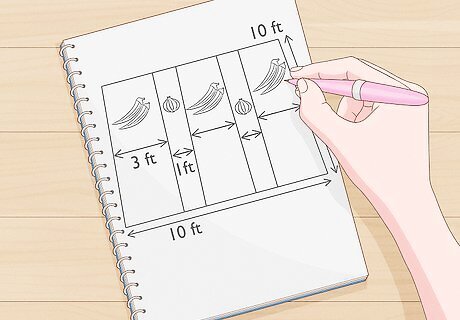
Sketch out rows and decide which vegetables to plant in each. This helps you keep track of what you're growing and you can control how much space to leave between the rows—read the plant labels for the recommended amount. For instance, you might plant cool-season crops in rows and designate another part of your garden for warm-season crops. Use recommended spacing as a guide for your garden layout. For example, plants like okra need 3 feet (0.91 m) of space between their rows. You could alternate rows of onions between the okra since onions only need a minimum of 1 foot (0.30 m) of space between them.
Gather your basic garden supplies.
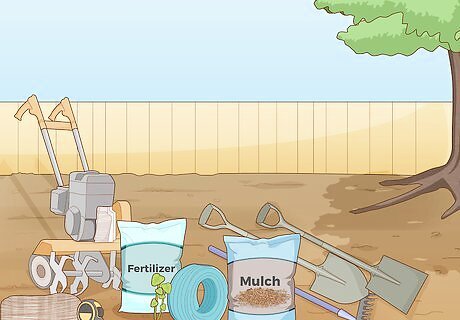
In addition to seeds or starts, collect gardening tools. If you're planting a small garden, you can get away with simple hand tools like a garden trowel for digging, a rake for leveling the soil, shovel, and a watering can. Here are a few other things to pick up from your local nursery, garden center, or online: Gardening gloves to protect your hands from calluses or splinters. Fertilizer for improving the soil or compost to enrich the soil. A sprinkler for hands-off watering or a hose to water larger gardens. A ruler to measure planting depth and space. A string and stakes to support tall or trailing plants like beans or cucumbers. Fencing supplies to keep out garden pests. A garden notebook to track what you planted and how it did.
Level the soil and add fertilizer or compost.
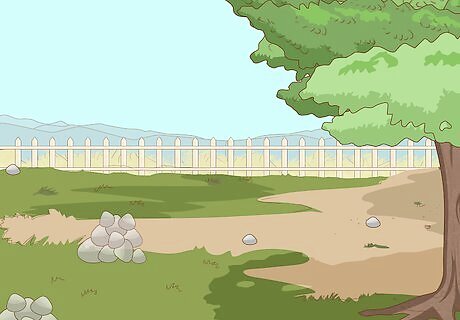
Remove rocks, roots, or sticks, and add nutrients to the soil. Walk through your gardening space and pull up anything in the soil that could make it hard for plant roots to grow. Then, mix all-purpose fertilizer (like 13-13-13) or compost into the top 4 inches (10 cm) of the soil. Drag the rake across it, so the soil is level. Plan on using 1 pound (450 g) of fertilizer for every 100 square feet (9.3 m) of soil. Most vegetables will be fine if you fertilize at the start of the growing season.
Plant warm-season crops after the last frost.
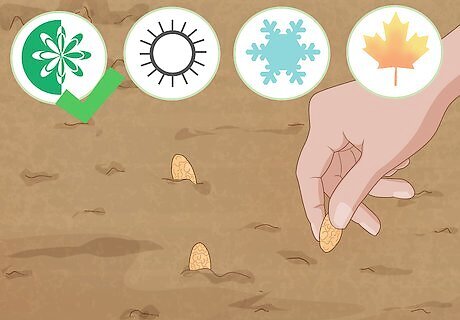
Grow crops that need lots of sunlight and heat if you want a summer garden. Most beginners start gardens in the spring or early summer because so many crops thrive with plenty of sunlight and warmth. These are some of the best warm season plants for beginners to try: Beans, cantaloupes, corn, cucumbers, eggplant, okra, peppers, pumpkins, southern peas, squash, sweet potatoes, tomatoes, and watermelons.
Plant cool-season crops in late summer.
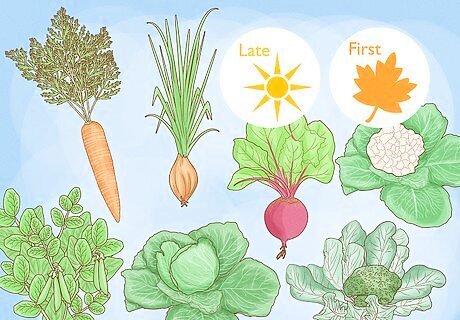
Keep your garden going by planting crops that you can harvest in the fall. You don't have to wait until the weather warms up—there are plenty of crops that grow well with cooler temperatures and less sunlight. If you prefer to start cool-season crops, wait until late summer and plant until the first fall frost. Beets, broccoli, Brussels sprouts, cabbage, carrots, cauliflower, collards, kale, kohlrabi, lettuce, mustard, onions, peas, potatoes, radishes, rutabagas, spinach, Swiss chard, and turnips.
Sow your seeds or plant your starts.

Dig holes for your plant starts or bury seeds ⁄4 to ⁄2 in (0.64 to 1.27 cm) deep. Read the label for each plant start to find the recommended depth. Then, dig a hole and put the start's roots down into it. Fill the hole with soil and gently pack it down. For seeds, scatter them over the surface of your soil and cover them with the recommended amount of soil. Keep in mind that seeds aren't planted very deep because they need to get sunlight as soon as they germinate. If you prefer to have straight rows of seeds, use your ruler to mark straight rows. Then, drag your finger lightly through the soil to make a very shallow indentation. Place your seeds in the rows and cover them with the soil.
Keep the soil in your garden moist.
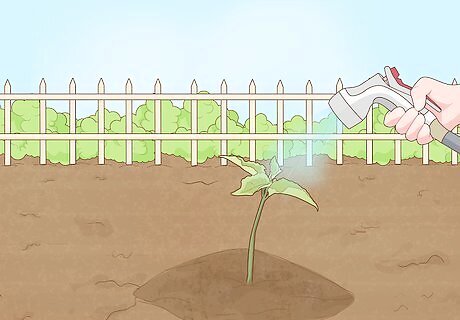
Water your garden whenever the top 2 inches (5.1 cm) of soil feels dry. If the seeds or plant starts dry out, they won't put on growth. Check the garden in the morning, and use a hose or a watering can to soak the soil. You may need to water more often if you live in a dry or hot climate. It's best to water during the day, so water can evaporate from the leaves.
Pull weeds at least a few times a week.
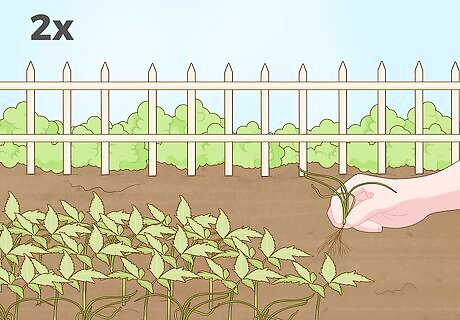
Use a small trowel to dig up weeds that compete with your plants. To reduce the time you spend pulling weeds, spread mulch or leafy organic material across your garden bed. The mulch smothers weeds, so they don't steal important nutrients from your vegetables. If you have trouble with wildlife in your yard, put up a fence around your garden to keep pests out.



















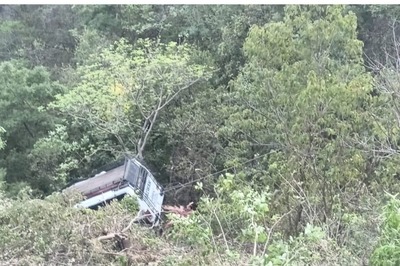
Comments
0 comment